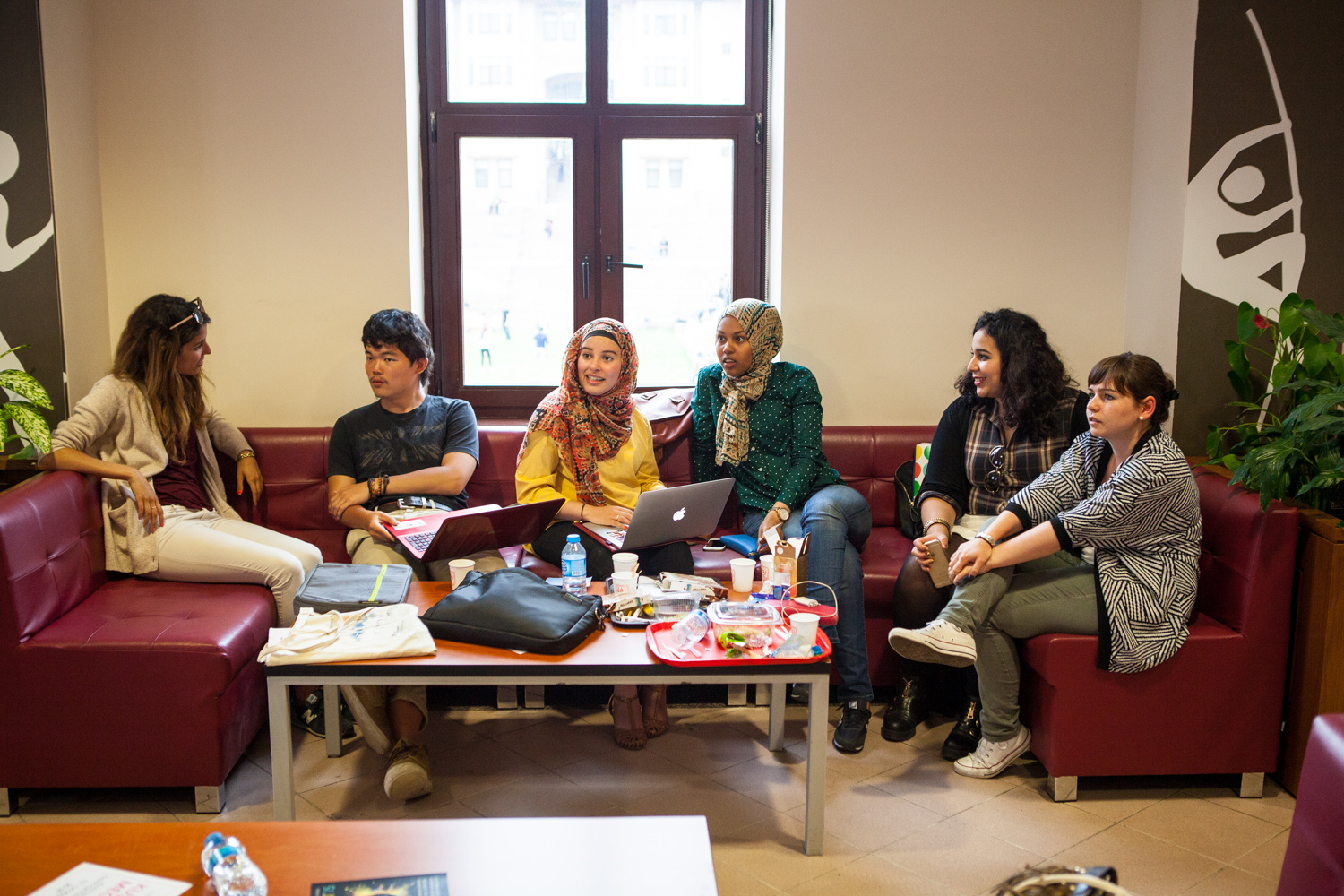
- Background
The Humanitarian Leadership Academy (the “Academy”) is a global learning initiative established
to support local organizations and communities in overcoming capacity barriers and acting as
leaders in humanitarian action. The Academy aims to accomplish this objective by facilitating
access to learning resources, platforms, and tools, creating a marketplace for contextualized
humanitarian learning, and by helping to support and nurture a cadre of Arabic-speaking
humanitarian learning professionals and providers. Collaboration is the cornerstone of the
Academy. We work with partners across the humanitarian sector and beyond, from technology
companies to universities, to ensure the best solutions are found for those most in need.
The Academy operates through a global network of centres and a digital platform (Kaya). The
global network is composed of ten Academy Centres, ultimately reaching forty countries. The
Middle East Academy Centre is due to be launched in 2017, and will form a cornerstone of the
Academy’s efforts to improve access to humanitarian learning in the Middle East Region.
Ahead of its launch, the Middle East Academy Centre seeks to commission a comprehensive,
strategic, and locally-led Needs Assessment, aimed at identifying key areas of demand within the
regional learning landscape. The Needs Assessment will guide and inform the Academy’s regional
strategy, and its approach to partnerships and learning.
The Needs Assessment should be focused on providing practical evidence-based findings and
recommendations that the Middle East Academy Centre can act upon based on the final output
of the exercise.
The Needs Assessment should adopt a broad approach by examining the various layers of the
humanitarian landscape. It should also provide insight into how the Academy’s activities might
affect local livelihoods and recovery efforts (for example, by investing in young people through
the provision of training and fostering livelihoods). It is also important that the Academy fully
understands the relevant local learning markets and has a broad mapping of potential partners
including governments, non-governmental organizations, the private sector, academic
institutions, and civil society groups.
2. Key Deliverables
The output of this project is a documented, strategic learning needs and capacity assessment. This should also include an Executive Summary of the report in Arabic. The Needs Assessment should be submitted as a final draft by April 8, 2017 and following feedback from the Academy, a final version submitted by April 23, 2017. This should also include a The geographic scope of the assessment will include Jordan and Lebanon as refugee-receiving countries as well as Syria. Security considerations will guide the research reach. Part of the research within Syria may need to be conducted by referring to organizations working inside Syria who are best placed to assess the current and developing needs of NGOs and communities there. Security considerations must always be taken into account. presentation of findings and a Q&A session. 1. A targeted review of the humanitarian sector landscape related to the Syrian crisis with The key deliverables of the research will include the following elements: brief historical/situational analysis of the crisis and emergency response activities in the region as well as the following: particular focus on Jordan and Lebanon as refugee-receiving countries. This will include a focus on Jordan and Lebanon as refugee-receiving countries; An analysis of humanitarian response efforts pertaining to the Syria Crisis with particular involved in the Syrian crisis with particular focus on Jordan and Lebanon as refugee- Strategic mapping of key humanitarian stakeholders and coordination mechanisms agencies, NGOs, civil society, and academic institutions. This mapping should be based on the Dalberg database format and cover all the organisations strategically relevant receiving countries. This includes mapping of governmental actors, local authorities, UN Identification of barriers, gaps, challenges, and “patterns of problems” in the delivery of to the Academy; individual capacity and constraints within the sector. This should also include an evaluation of the main shortcomings related to the provision of humanitarian aid, humanitarian aid in Syria, Jordan and Lebanon, with a focus on organizational and of aid workers.including in areas of learning delivery, knowledge management and capacity-building
The percentages of nationals employed within international aid organizations in the
research assigned regions, and the main impediments hindering the employment of
national and regional staff (Arab Nationals).
- A targeted review of the regional humanitarian learning landscape, particularly as related
to the Syrian crisis affecting Syria, Lebanon and Jordan amongst others.
The review should describe, evaluate, and analyse the following:
The Regional Humanitarian Learning Landscape: The Needs Assessment should
evaluate the accessibility of learning programmes by humanitarian actors involved
in responding to the Syrian Crisis, including those in leadership, middle-
management, and lower management positions, and first responders. It should
provide an assessment of the effectiveness of existing learning tools in addressing
the needs of humanitarian actors on the ground, and assess, in particular, existing
infrastructural barriers to the effective delivery of such learning tools, in areas such
as language, cost, and technology;
The Impact of Learning Gaps on Humanitarian Personnel: The study should also
evaluate and assess existing shortages of trained humanitarian personnel –
particularly in local communities and the impact of such gaps on ongoing relief
efforts;
Status of preparedness training at the national and regional levels, particularly in
fragile and insecure environments;
Existing frameworks and gaps in thematic learning areas, including project and
programme management, humanitarian aid delivery, WASH, protection,
International Humanitarian Law, minimum standards (Sphere), shelter, and other key
subject areas. This can also include a brief survey of secondary literature identifying
existing gaps and needs in knowledge and practice in-country, such as
documented case studies, UN reports, and other stakeholder reports. This research
should be supplemented with interviews with existing practitioners. - An analysis of existing training providers and programmes, with a particular focus on
Arabic-language providers and content. This should include:
Stakeholder mapping of key organisations providing humanitarian training for the
Syrian crisis with particular focus on Jordan and Lebanon as refugee-receiving
countries. This can include existing programs that work to delivering knowledge
and/or evidence-sharing initiatives, focusing on research or evaluations relating to
humanitarian practices, capacity building, innovation, and lessons learnt. This should
also include a list of the main providers of the humanitarian content and the
available languages. This mapping should be based on the Dalberg database
format and cover all the organisations strategically relevant to the Academy;
Identification of the main learning and knowledge resources and partners that the
targeting groups such as entry-level humanitarians, volunteers, civil defense, police
forces, and border control. This also entails capturing learning efforts developed by
previous learning and capacity-building initiatives.
Research on potential learning partners and the potential to work with these
partners to create “distance/digital learning modules” (including in areas of
“training the trainers”) that can be used in distant or difficult-to-access areas of
operation and downloaded from the web portal in Arabic.
Documentation of successful, collaborative examples and approaches to learning
delivery that can be used by the Academy. This should include information on
activities such as:
o The development of a humanitarian lexicon in the Arabic language;
o Successful translation and Arabization of course content;
o A number of “case studies” that document, analyse, and disseminate field-
based best practices as a source of humanitarian learning.
- A review of the technology infrastructure to identify the feasibility of relying on e-learning
methods as a main vessel for the delivery of humanitarian education. This will include:
A general overview of internet penetration rates in the Syria and surrounding states;
The accessibility of e-learning tools to humanitarian providers, and their willingness
to rely on e-learning tools, online, or blended learning solutions. The review should
also highlight existing training delivery methods favoured by the humanitarian sector
in the region;
Investigate broader perceptions of the credibility and effectiveness of e-learning as
an educational capacity-building tool. This will inform our assessment of whether it is
feasible to rely on e-learning as a central platform for the delivery of training.
It is expected that an initial desk research will identify existing reports, initiatives and studies that
may provide useful background material.
The Needs Assessment should adopt a broad approach by examining the various layers of the
humanitarian landscape. The successful candidate should review the following documents in
addition to relevant materials publicly available on our website:
Needs Assessment for the Middle East Academy Centre- Final report, INTRAC, July 2016
Middle East Academy Centre Strategic Direction, Brehon Advisory, September 2016
Dalberg Database
Humanitarian Leadership Academy Core Narrative
- Deadline for Submissions and Process Timeline
The deadline for submission of a final, detailed proposal (no more than four pages- containing
sections on 1) organisational experience and ability, 2) methodology, 3) personnel, 4) timeline
and 5) detailed budget) should be submitted to [email protected] by February
19, 2017. Notification of the final decision and contracting will be made on February 24, 2017. - Contracting Arrangements
A contract for consultancy services will be put in place, based on the Academy’s standard terms
For more information please visit the link below :







Add Comment